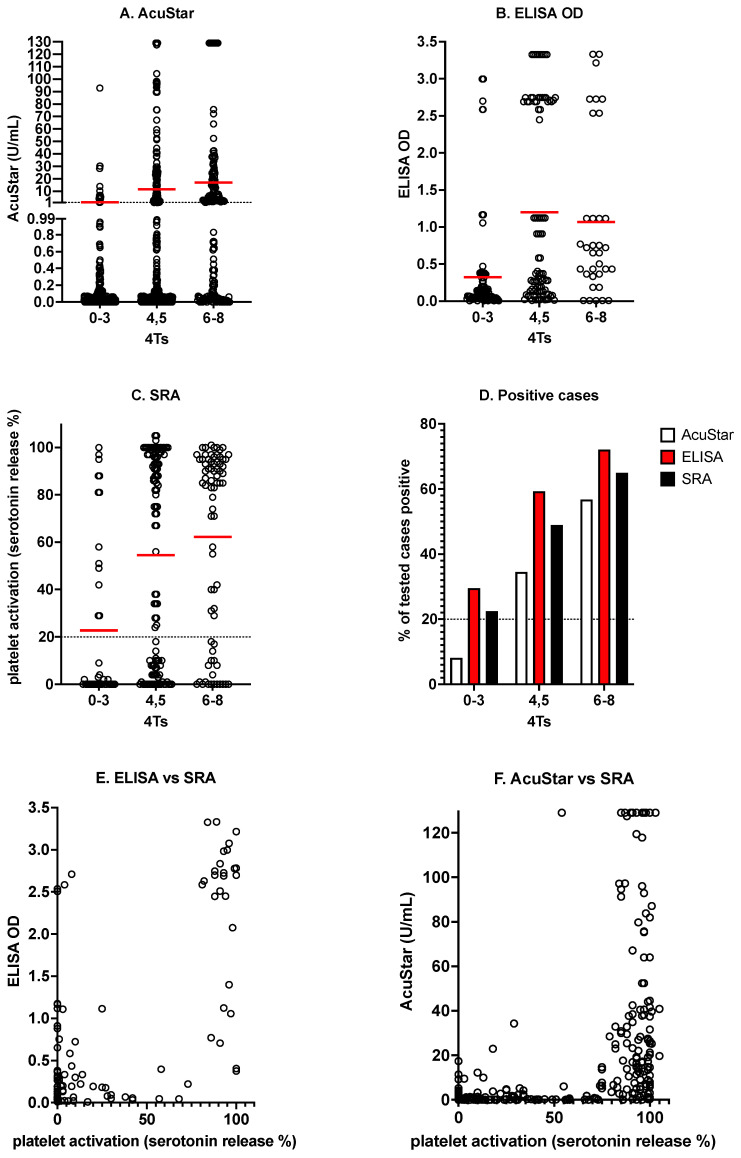Figure 2.
Some examples of testing for HIT according to 4T score (4Ts) and reactivity profiles. The higher the 4Ts, the more likely the presence of PF4/H antibodies. Thus, the higher the 4Ts, the higher the expected result in the AcuStar chemiluminescence assay (A), the higher the expected result by ELISA OD (optical density; (B)), and the greater the expected level of platelet activation by SRA (C) (the red dash in each score group indicates the average value for the dataset). The higher the 4Ts, the higher the expected proportion of tested cases being positive by each assay (D). The higher the titer of immunologically detected PF4/H antibodies, the more likely the positivity in functional platelet activation assays (E,F). Data shown here are historical multicenter data, including from the Westmead laboratory, as partly previously reported [9,10]. OD, optical density.

